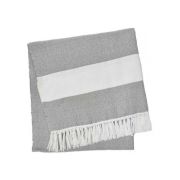Weaver Green is a home accessories brand known for their eco-friendly approach. Tasha and Barney Green launched the brand with the intention of making something useful from plastic bottles. Pooling their joint experience, they endeavoured to create the perfect yarn. This textile had to feel like wool whilst being practical.
They have since become known for their luxuriously soft materials that can be used indoors and out, that's stain resistant and machine washable. Whether it's Weaver Green rugs, throws, cushions or other accessories, they have made a name as an industry leader.
We caught up with Tasha Green to get the story of their journey from idea, to innovation, to industry.
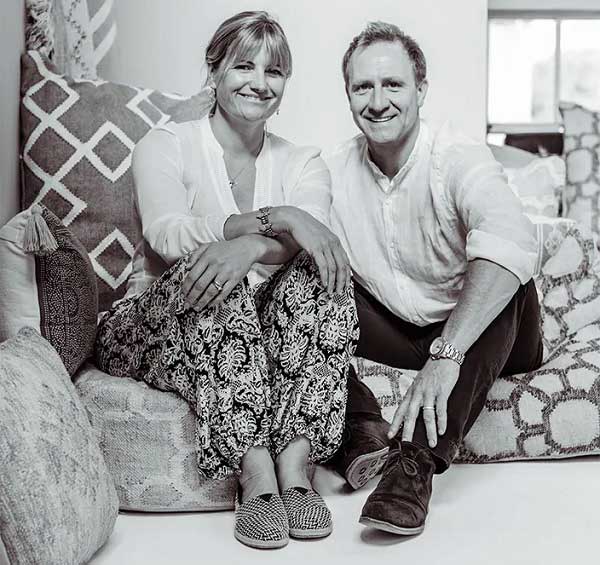

What was the development process like with your recycled plastic yarn?
Creating our recycled plastic yarn was a bit like any journey worth going on, full of moments of frustration, excitement, challenge, financial pressure and triumph. Doing anything new is never an easy ride but we can genuinely say that the lows were worth it, and it’s exciting to be at the forefront of innovation and change in the textiles world.
It took us nearly seven years to get to a point where we had a great yarn that looked and felt the way we wanted it to. When we first started no one was really talking about how we could reuse and recycle plastic rather than constantly making new virgin polyester. The world has changed so much since we started, there is so much consumer awareness now and that’s a great thing.
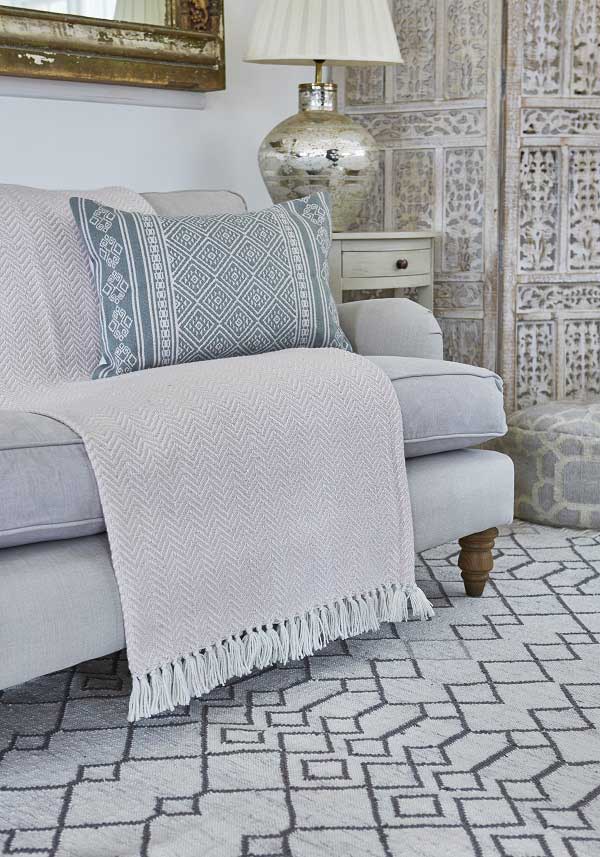

What was the biggest lesson looking back on your time entering the textile world?
Listen and learn where you can. There are so many talented people in the world, you just need to track them down and talk to them – also don’t expect big businesses to have all the answers. We have always found innovation and energy through working with small businesses where people are open and prepared to take risks.
Finally, just because something has always been done someway, don’t assume there are no alternatives. Our entire business has been built on doing things differently or in ways that people said were impossible or not economically sound. Sometimes you just have to believe in your ideas and push forward.
Where do you get your design inspiration?
I design textiles that I would like to live with in my own home. I take a lot of inspiration from historical buildings. There are great colour combinations that just work in churches and National Trust houses but that sound hideous on paper.
I love travel and take lots of pictures of gardens and plant combinations, tile designs, and other forms – the natural world is a great inspiration. Our Tarifa Rug colours were inspired by a tropical fish we saw when snorkelling!
I love tribal rugs and designs – they are so rooted in the culture and landscape of a place, and also the dyes and materials available for use.
What are the most popular Weaver Green designs?
Our Nomad Kilim range has always been a winning design. People just cant believe our kilims look and feel like original wool kilims but are made entirely from recycled plastic bottles. I love the ability of Weaver Green to take cutting edge technology and textile development, and apply it to traditional weaving techniques and handcrafted textiles.
We try and design around three key looks, which work well together or in isolation – bohemian, Scandinavian design and simple classics (herringbones etc.). I love the combination of all three together to create an eclectic interior feel. Tarifa and our Andalucia ranges have been very popular this year, taking classic kilim and dhurrie design cues but using soft pastels and washed-out fluorescent colours.
Do you have a brand mantra or motto?
‘Great design shouldn’t cost the Earth.’ We have always built our business on the philosophy that our products should be positive for the environment, our weavers and all those involved in their manufacture. We developed a game-changing closed-water process for all our manufacturing with zero waste water emissions, use non toxic dyes, recycle wheat husks to heat our dyeing vats, ensure all our team are paid fairly and work in safe and comfortable conditions.
We are firm believers that an environmentally sustainable future lies in the hands of great designers. If we design new environmentally positive packaging and products and cull the pointless and wasteful use of single-use plastic and materials then we can make a major impact on the health of our planet. We should be investing in the new generation of designers and encouraging innovation and new thought.
Your products come at a surprisingly great price, considering their luxurious handle, how important was the price point to you?
We wanted our products to be great value and accessible to all. This allowed us to generate sufficient volume of production of our yarn to make us able to compete in a very competitive market. We make small profits and pass on the benefits of production to both our weavers and our customers.
What challenges do you face as an eco-friendly brand?
All our processes are significantly more expensive than if we were making our products from new virgin plastic. We have major logistic issues with collecting and recycling the raw PET plastic bottles, ensuring they are clean and separated from non PET contaminants (polypropylene lids etc.). Then the processes of chipping, sorting, heating, extruding, opening the fibres, spinning into a yarn etc. This is before we’ve even started to design and weave a rug or textile!
The great news is that we have felt a real upsurge in the commitment of consumers to track down and support small innovative eco-friendly brands like ours in recent years. The challenge is always to double check and research the real credentials of the companies that claim to be eco. Big brands have definitely recognised the marketing value of presenting themselves as eco and we have seen lots of very confusing and misleading marketing campaigns from larger brands recently.
Look for the small guys – in my experience they are usually doing it right and with genuine values.
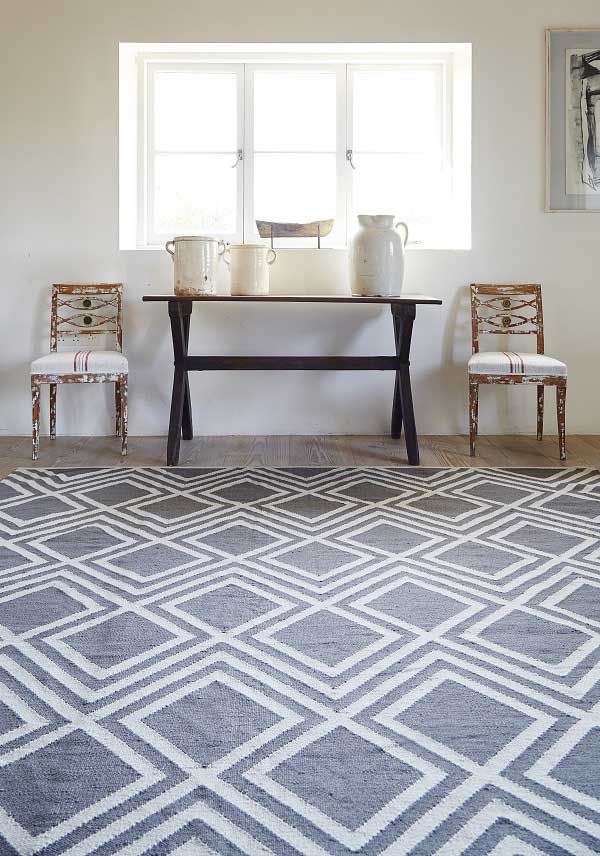

Other than buying Weaver Green products, what's your one top tip for going eco-friendly at home?
Use less – of everything! We definitely consume more than we need and I am also guilty of over-buying food, wasting materials, and living with too much. My New Years' resolution was to think more when I buy anything. Do I love it? Do I need it? How would I dispose of it at the end of it’s natural useful life?
At Weaver Green we ONLY use recycled PET to make our yarn, meaning that our products are 100% recyclable at the end of their natural life. If you buy products made from more that one material, then make sure they can be easily separated into the component parts to be recycled. A classic example would be clothing made from a combination of recycled polyester and cotton – totally unrecyclable. The cotton and polyester both contaminate each other when it comes to recycling.
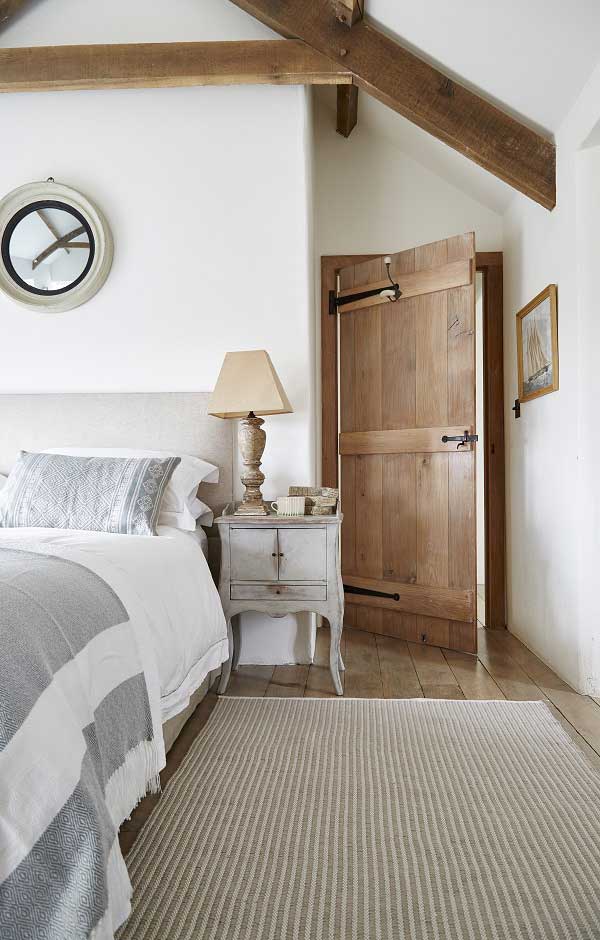

What's your take on the current surge in environmental awareness?
It’s brilliant – there is a real sense of change and commitment! People need hope and now we need our politicians to put measures in place that legislate for change and force the worst polluters to improve their practices.
What can be expected from Weaver Green in the near future?
I love developing our yarn – we are working on new hand-feels. Following the launch of our new linen-feel textile in 2019, we will also be working on some interesting collaborations going forward.
Last year saw Weaver Green recycle your 100 millionth plastic bottle, what's the next milestone you hope to achieve?
To plant more trees! We planted a 2,000 tree orchard around our office and showroom in deepest Devon in the past few years. We’d like to plant more and to work with other like-minded partners to plant more trees. Plus, we like a pint or two of proper cider, so orchards are a win-win.
What do you like best about F&P Interiors?
F&P interiors is a great resource for inspiration in colour and design. I love the open forum, the advice and discussion blogs, and always find something interesting to read or look at.
- paypal
- visa
- mastercard
- amex

